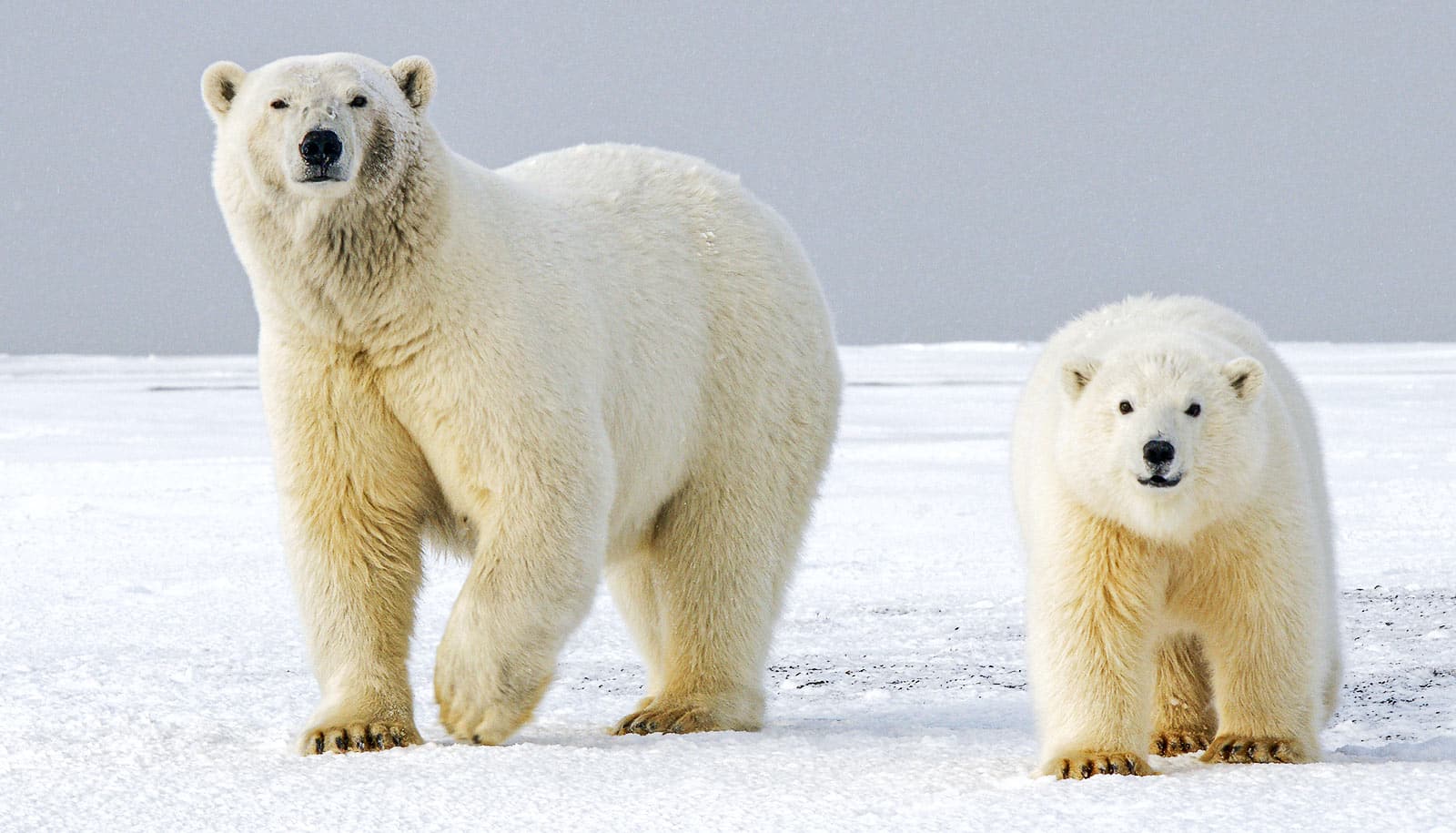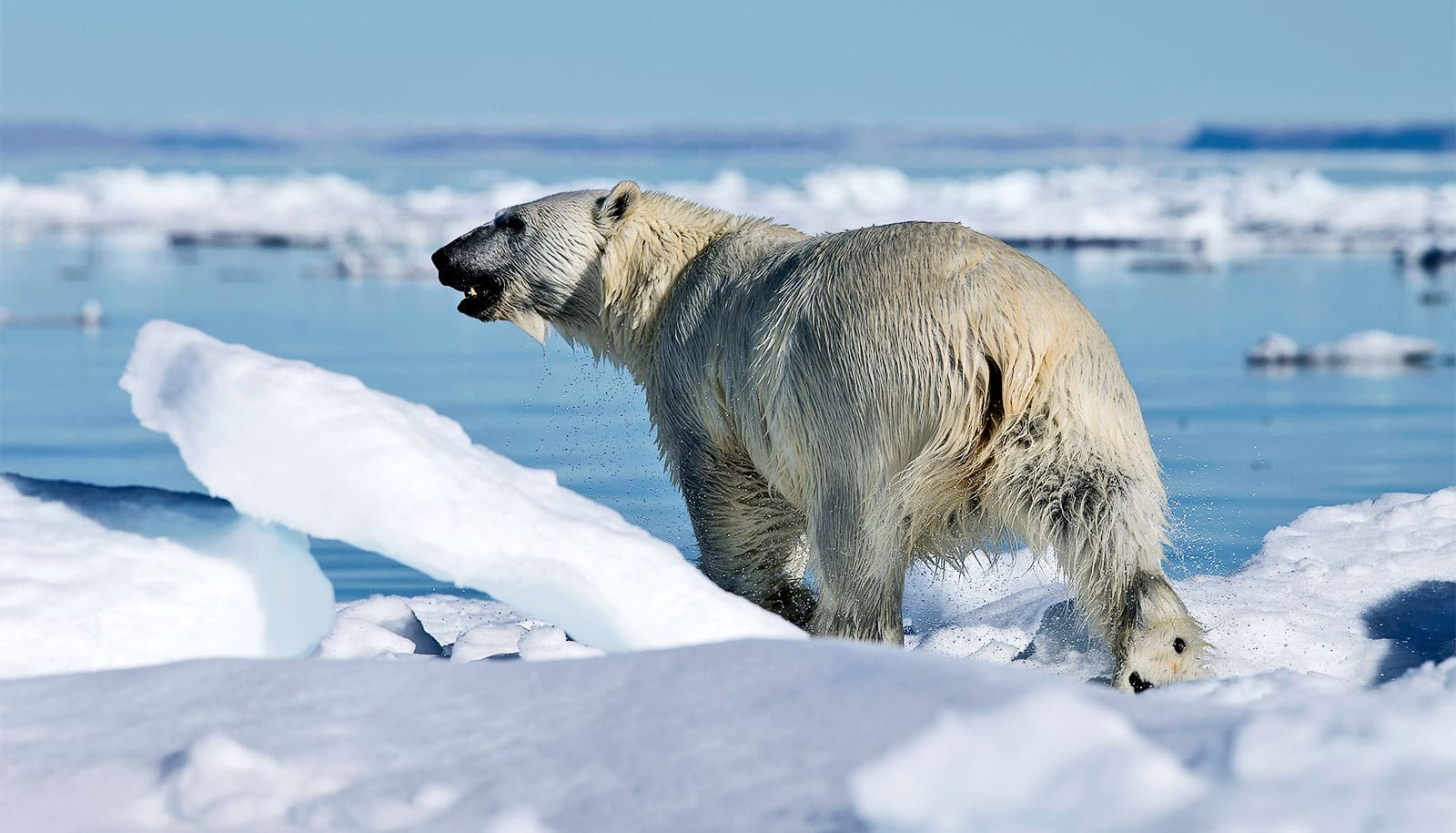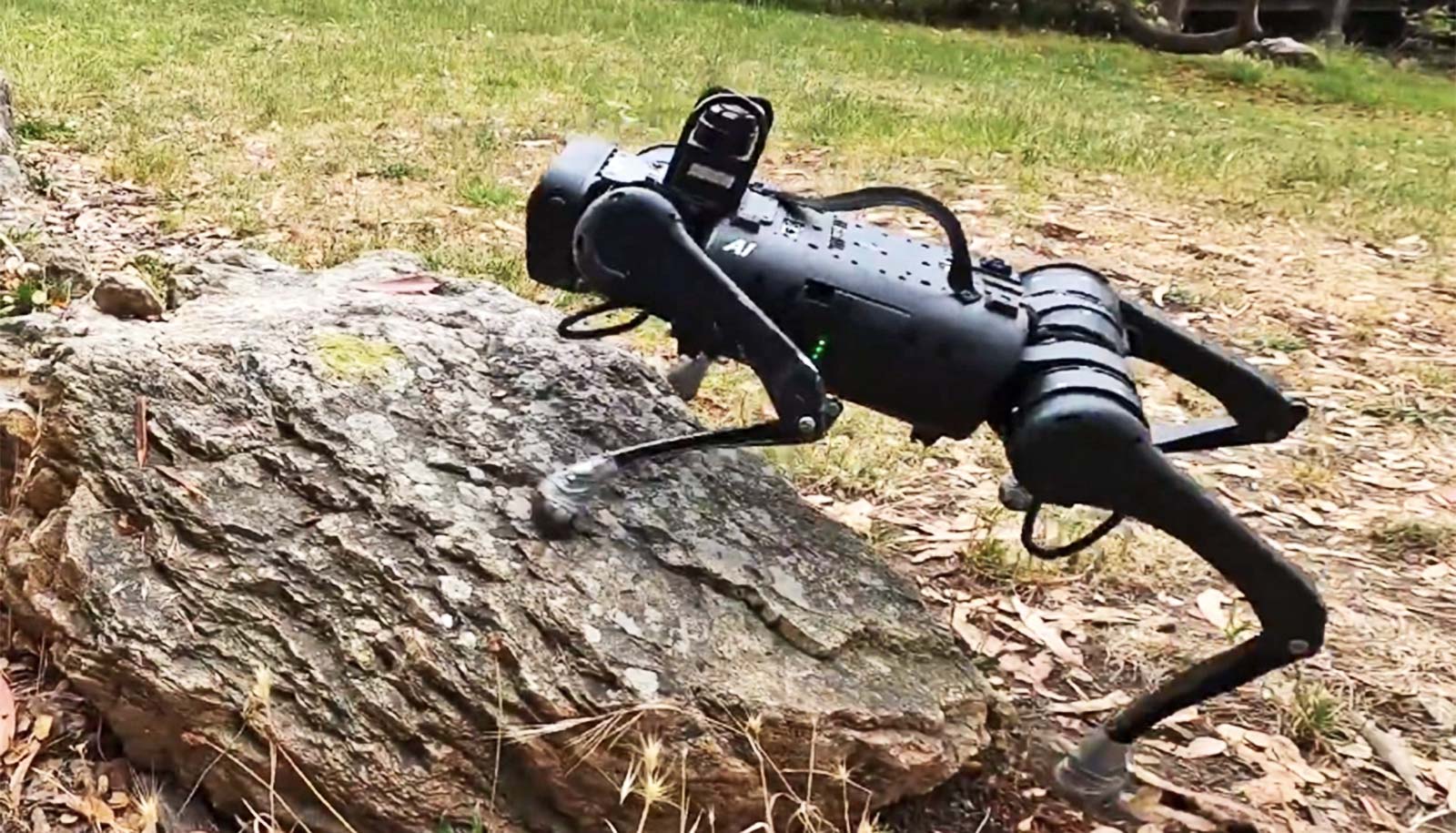New research digs into how the design principles of polar bear paws allow them to have better traction on ice compared to other bear species.
The work identifies a new nature-based method that could be incorporated into human engineering challenges associated with traction, namely for products that slip on snow and ice such as tires and shoes.
The researchers used actual samples and replicas of bear paw pads from museums, taxidermists, and other collections, and imaged them using a scanning electron microscope and a surface profilometer, instruments that can measure surface texture and features.
The team also created 3D printouts of the structures to vary diameter and height of features and tested them in the lab to see how they reacted to snow conditions.
The group specifically studied the hard bumps on the foot pads of bear paws called papillae, which have long been thought to help them grip ice and keep from slipping.
They discovered that the papillae on polar bears were up to 1.5 times taller than other species. Importantly, the taller papillae of polar bears help to increase traction on snow relative to shorter ones.
Even though polar bears have smaller paw pads compared to the other species (likely because of greater fur coverage for heat conservation), the taller papillae of polar bears compensate for their smaller paw pads, giving them a 30-50% increase in frictional shear stress—or lateral grip.
“This is exciting interdisciplinary work that studied a long-held belief that the micro-structures on polar bear paw pads were an adaptation to increased traction on ice and snow,” says Austin Garner, assistant professor of biology and member of BioInspired at Syracuse University, and coauthor of the study in Journal of the Royal Society Interface.
“Our work shows that the papillae themselves are not an adaptation for this because other bears have them, but the unique dimensions of polar bear papillae do confer an advantage in traction.”
The team now hopes that other scientists and manufacturers can apply their research to product design. For example, snow tires now have deeper treads than all season tires, but this research could also suggest design modifications for increased traction.
Garner took part in the research as a PhD student at the University of Akron. Additional coauthors are from the University of Akron.
Source: Syracuse University


